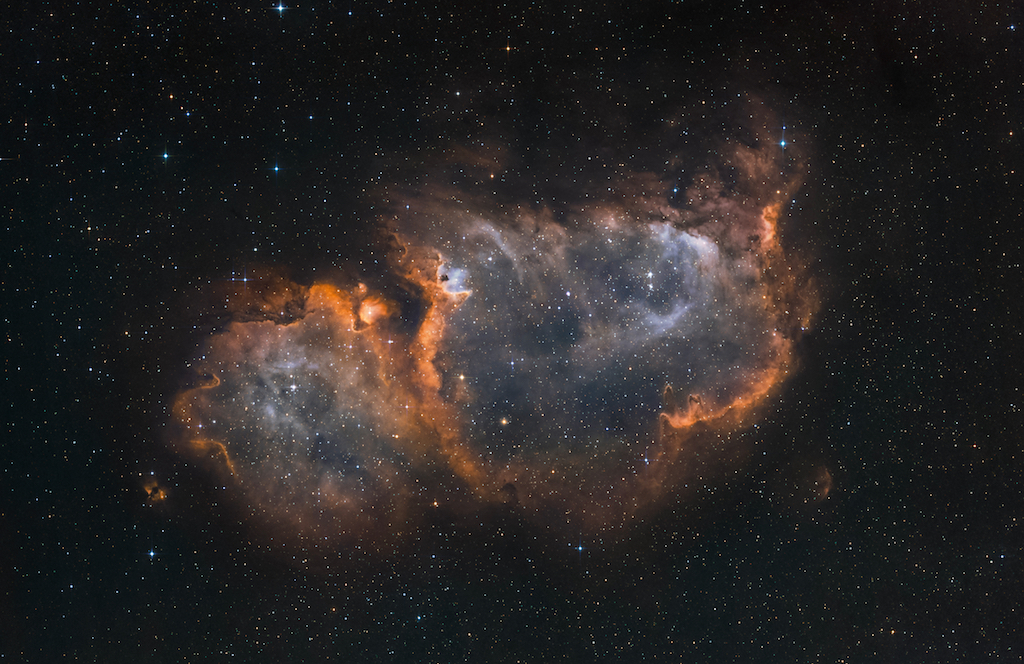What is dark matter?
Peering into the dark.

Dark matter is a mysterious non-luminous substance making up the vast majority of matter in the universe. Though experts have observed the gravitational effects of dark matter for decades, scientists remain baffled as to its true nature.
Who discovered dark matter?
In the late 19th century, astronomers began speculating about unseen material — either dim stars or gas and dust, scattered throughout the universe. Researchers had even begun to estimate its mass, according to a 2018 review in the journal Reviews of Modern Physics. Most thought this mysterious substance was a minor component of the total mass in the cosmos.
It wasn't until 1933 that Swiss-American astronomer Fritz Zwicky noticed that distant galaxies were spinning around one another much faster than should be possible given their visible matter seen in telescopes. "If this would be confirmed, we would get the surprising result that dark matter is present in much greater amount than luminous matter," he wrote in a paper published in the journal Helvetica Physica Acta that year.
But many in the field remained skeptical of Zwicky's results until the 1970s, when astronomers Kent Ford and Vera Rubin made detailed studies of stars in the outer regions of the neighboring Andromeda galaxy. These stars were orbiting the galactic core far too quickly, almost as if some invisible material was gravitationally tugging on them and pushing them along — an observation scientists soon noticed in galaxies all over the universe.
Researchers had no idea what this unseen mass consisted of, with some astronomers speculating that dark matter was made up of small black holes or other compact objects that gave off too little light to show up in telescopes. The results got even stranger in the 1990s, when a space telescope called the Wilkinson Microwave Anisotropy Probe (WMAP) showed that this dark matter outweighed ordinary visible matter by five to one, according to NASA.
Why dark matter remains a mystery
Telescope surveys were never able to find enough small compact objects to account for this enormous profusion of material. Most modern-day astronomers think dark matter likely consists of subatomic particles with properties that are rather different from more familiar protons and neutrons.
The reigning candidate for dark matter is called a Weakly Interacting Massive Particle or WIMP. These speculative entities are not found in the Standard Model of particle physics, which describes almost all particles and forces. WIMPs would be more similar to the ghostly neutrino, except it would weigh 10 to 100 times more than a proton. (Neutrinos' exact masses are unknown but they are far lighter than electrons).
Get the world’s most fascinating discoveries delivered straight to your inbox.
Like neutrinos, WIMPs would only interact with two of the four fundamental forces in the universe: Gravity and the nuclear weak force, which mediates the decay of radioactive atomic nuclei. These dark matter particles would be electrically neutral, which means they would not interact with electromagnetism, the basis of light, and would therefore remain invisible.
Physicists have built enormous detectors and placed them deep underground to protect them from interfering cosmic rays in efforts to detect WIMPs, but so far no experiment has uncovered evidence for them. In recent years, this failure has led some in the field to begin wondering if they've headed on a wild particle chase with no real end.
Some scientists are therefore turning their attention to a newer dark matter candidate called the axion, which would be a millionth or even a billionth the mass of an electron, the Proceedings of the National Academy of Science reported. These hypothetical particles are particularly attractive to researchers because they could also solve another outstanding problem in physics, potentially interacting with neutrons to explain why they can feel magnetic fields but not electric ones.
In June 2020, members of the XENON1T experiment based at the Gran Sasso National Laboratory in Italy, a detector originally built to try capturing WIMPs, announced that they had found a small but unexpected signal that could be explained by the presence of axions. The results shocked the scientific community, but have yet to be confirmed by other experiments.
Is dark matter even real?
This means that researchers are still scratching their heads over just what dark matter is. Some theorists have wondered if there is an entire dark sector of the universe, with multiple particles and even dark forces that only affect dark matter, akin to the subatomic complexity seen in the visible cosmos.
At the same time, a minority of scientists believe that dark matter is a mirage. They subscribe to an idea known as modified version of inertia, or MOND, which conjectures that on large scales, gravity acts differently than expected and this accounts for the observed rotations of stars and galaxies. But most experts aren't convinced of the need to take such a radical departure from known physics, which would also require modifications to our understanding of large parts of reality.
Dark matter is not, to anyone's knowledge, linked with dark energy, another mysterious phenomenon responsible for accelerating the expansion of the cosmos. The two simply share the word "dark," which is often used as a placeholder by scientists for things they don't entirely understand.
Additional resources:
- Read more about dark matter from NASA Education.
- Learn more about the difference between dark matter and dark energy, from NASA Science.
- Watch this recording of a public lecture given by Fermilab physicist Dan Bauer, explaining what dark matter is, and why it matters.

Adam Mann is a freelance journalist with over a decade of experience, specializing in astronomy and physics stories. He has a bachelor's degree in astrophysics from UC Berkeley. His work has appeared in the New Yorker, New York Times, National Geographic, Wall Street Journal, Wired, Nature, Science, and many other places. He lives in Oakland, California, where he enjoys riding his bike.


